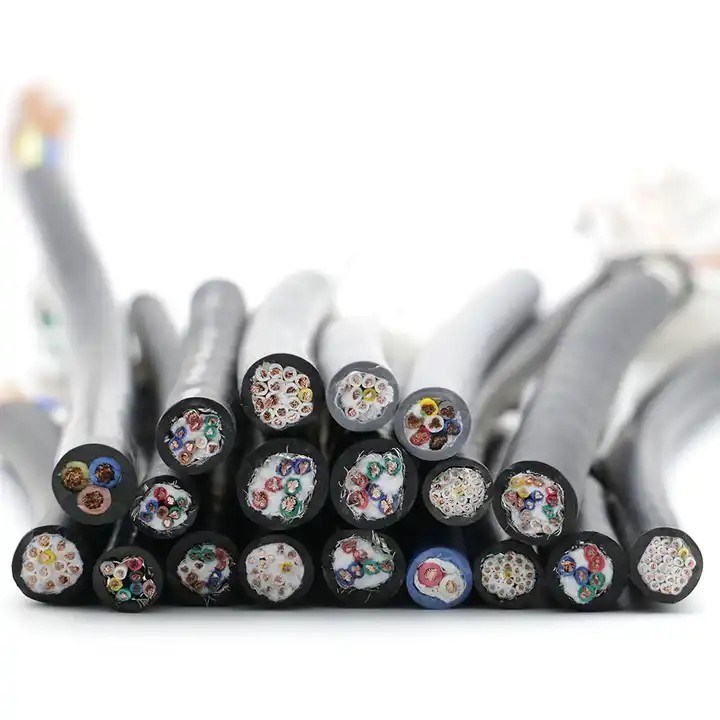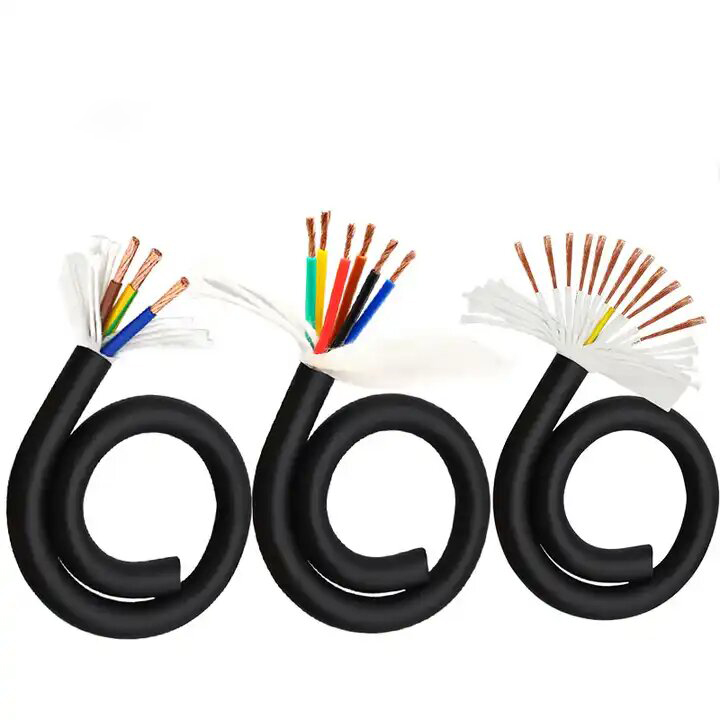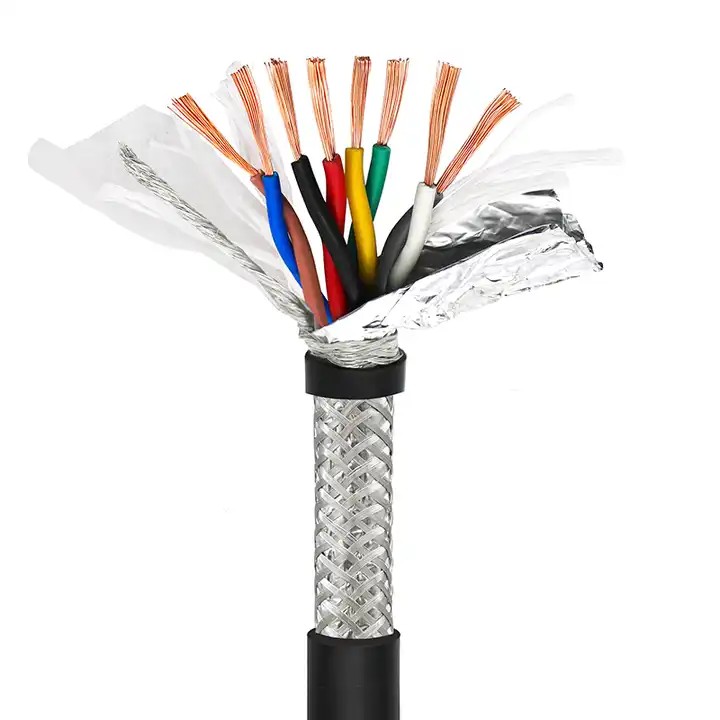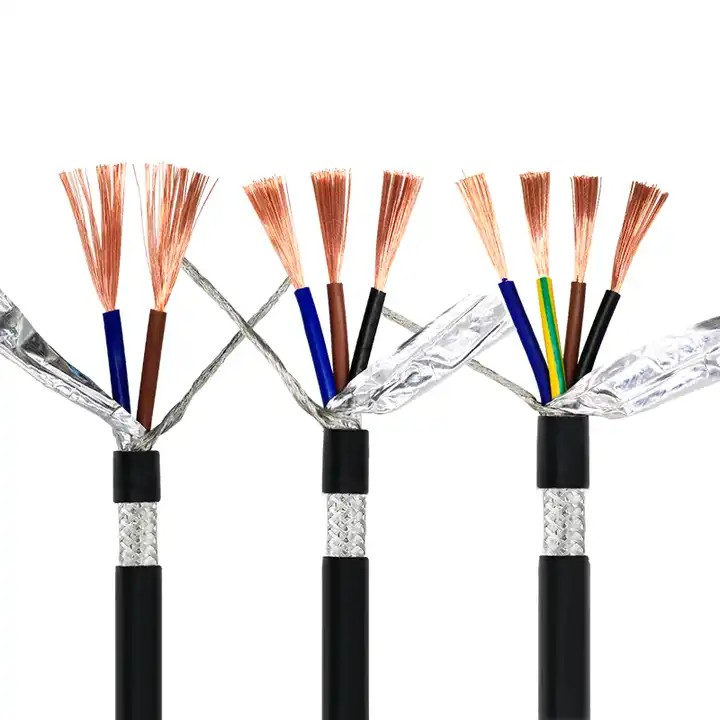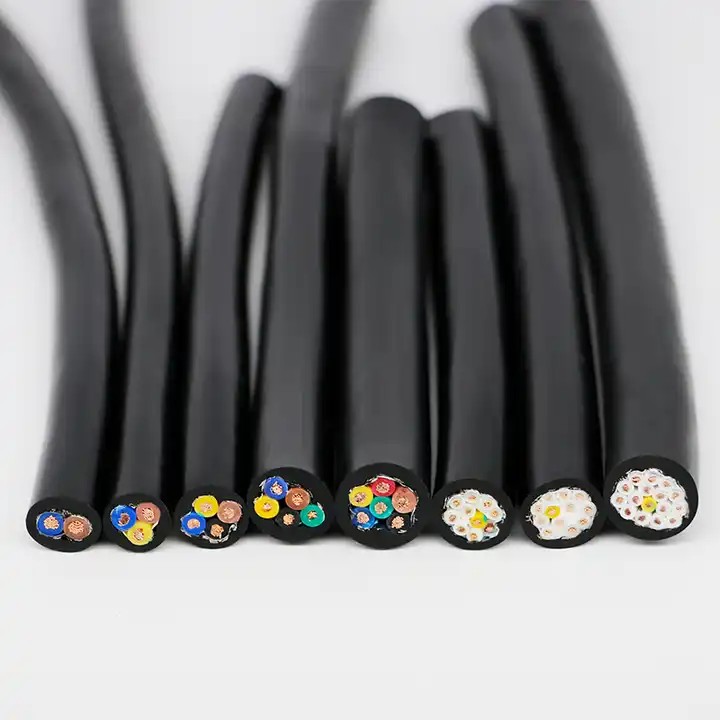How Do Multicore Shielded Cables Prevent Interference?
Published:
2024-12-26 11:39:37
Multicore shielded cables play an essential role in preventing interference and ensuring the integrity of signals.
In today's modern electrical systems, ensuring signal integrity and preventing electromagnetic interference (EMI) are critical for the smooth operation of sensitive devices. This is where multicore shielded cables come into play. These cables are designed with multiple cores of insulated conductors wrapped in a protective shield that helps block external electromagnetic interference. Whether you’re dealing with multicore shielded cables for robotics or industrial machinery, understanding how these cables prevent interference is key to optimizing your systems.
What Are Multicore Shielded Cables?
Multicore shielded cables are specialized cables with several internal conductive cores, each typically insulated to prevent short circuits. The key feature of these cables is their protective shield, often made from materials like copper, aluminum, or braided wire, which surrounds the cores. This shield serves as a barrier against external electrical noise and interference, ensuring the integrity of the transmitted signal.The core structure of the cable allows for multiple signals to be transmitted through a single cable, which makes them ideal for a range of applications, from power distribution to data transfer. In environments where noise and signal degradation can compromise system performance, multicore shielded cables offer a reliable solution.

How Do Multicore Shielded Cables Prevent Interference?
Electromagnetic Interference (EMI) Shielding:The primary function of the shield in multicore shielded cables is to protect against electromagnetic interference (EMI). EMI is caused by electrical signals that radiate from power lines, machinery, or other devices. These signals can disrupt sensitive equipment, causing data loss, equipment malfunction, or even system failure. The shield in shielded multicore cables acts as a barrier, absorbing and deflecting these unwanted electromagnetic waves, ensuring that the transmitted signals remain unaffected by external interference.
Grounding the Shield:In many multicore shielded cables, the shield is grounded to divert the interference away from the sensitive conductors inside the cable. This grounding method helps direct the EMI to a safe location, typically back to the ground, where it cannot affect the system. The grounding further enhances the ability of the cable to maintain signal integrity and avoid signal degradation caused by external noise.
Prevention of Crosstalk:In cables with multiple cores, especially those used in multicore shielded cables for robotics and other industrial systems, the risk of crosstalk—where signals from one core interfere with others—can be high. The shielding not only prevents external interference but also helps reduce crosstalk between the cores themselves. This ensures that each signal remains clear and free from distortion, which is especially important in complex systems that rely on precise data transfer.
Flexibility and Durability:Flexible multicore shielded cables offer an added benefit in environments where cables need to be moved or bent regularly. The flexibility of these cables doesn’t compromise their ability to block interference. These cables maintain their shielding effectiveness even under bending or twisting, making them ideal for robotics, manufacturing, and other dynamic applications where movement is common.
Improved Signal Quality Over Long Distances:One of the main advantages of shielded multicore cables is their ability to maintain high-quality signal transmission over long distances. Without proper shielding, cables can suffer from signal degradation due to the interference picked up over the distance. The shielded design of these cables minimizes the risk of signal loss, making them an excellent choice for applications requiring long cable runs, such as in industrial settings, robotics, or data centers.
Applications of Multicore Shielded Cables
Robotics:In robotics, precise control signals and data transmission are vital for the proper functioning of robotic arms, sensors, and actuators. Multicore shielded cables for robotics ensure that electrical signals remain free from interference, maintaining the accuracy of robotic movements and sensor readings. The durability and flexibility of these cables are ideal for the dynamic environments in which robots operate, preventing signal disruption that could affect performance.
Industrial Equipment:Shielded multicore cables are commonly used in industries that require reliable communication between machines and control systems. These cables protect sensitive control signals from the electrical noise produced by large machinery, ensuring smooth operation and reducing the risk of costly malfunctions.
Data Communication Systems:Multicore shielded cables are frequently used in data communication systems, where maintaining the integrity of transmitted data is essential. Whether in fiber optic networks or Ethernet connections, the shielding in these cables prevents data corruption from external interference, allowing for faster, more reliable communication.
Power Distribution:Power systems, especially those used in environments like factories or substations, often operate in areas with high electrical noise. Multicore shielded cables help to shield the power signals, ensuring that the integrity of the electrical flow remains stable, even when other equipment generates significant electromagnetic noise.
Choosing the Right Multicore Shielded Cable
When selecting multicore shielded cables for a specific application, it’s important to consider several factors:
Material of the Shielding: The material used for the shield, such as copper or aluminum, can impact the effectiveness of EMI protection. Copper tends to offer better shielding, but aluminum is lighter and more cost-effective.
Cable Flexibility: Depending on the application, you may need cables that offer flexibility, especially in dynamic environments like robotics. Flexible multicore shielded cables provide flexibility without sacrificing shielding performance.
Size and Number of Cores: Ensure the cable has enough cores to handle the number of signals you need to transmit, without overcrowding the cores, which could lead to crosstalk or other issues.
Environmental Conditions: If your cables are to be used in harsh environments, choose shielded multicore cables that are resistant to moisture, chemicals, or temperature extremes.
Multicore shielded cables play an essential role in preventing interference and ensuring the integrity of signals in various applications, including robotics, industrial systems, and data transmission. Their shielding effectively blocks electromagnetic interference, prevents crosstalk, and maintains signal quality, even over long distances. Whether you’re using flexible multicore shielded cables for dynamic robotic environments or shielded multicore cables for industrial machinery, these cables are crucial for improving the reliability and performance of your systems. By choosing the right multicore shielded cable, you can ensure smooth, uninterrupted operation for even the most sensitive and complex systems.


